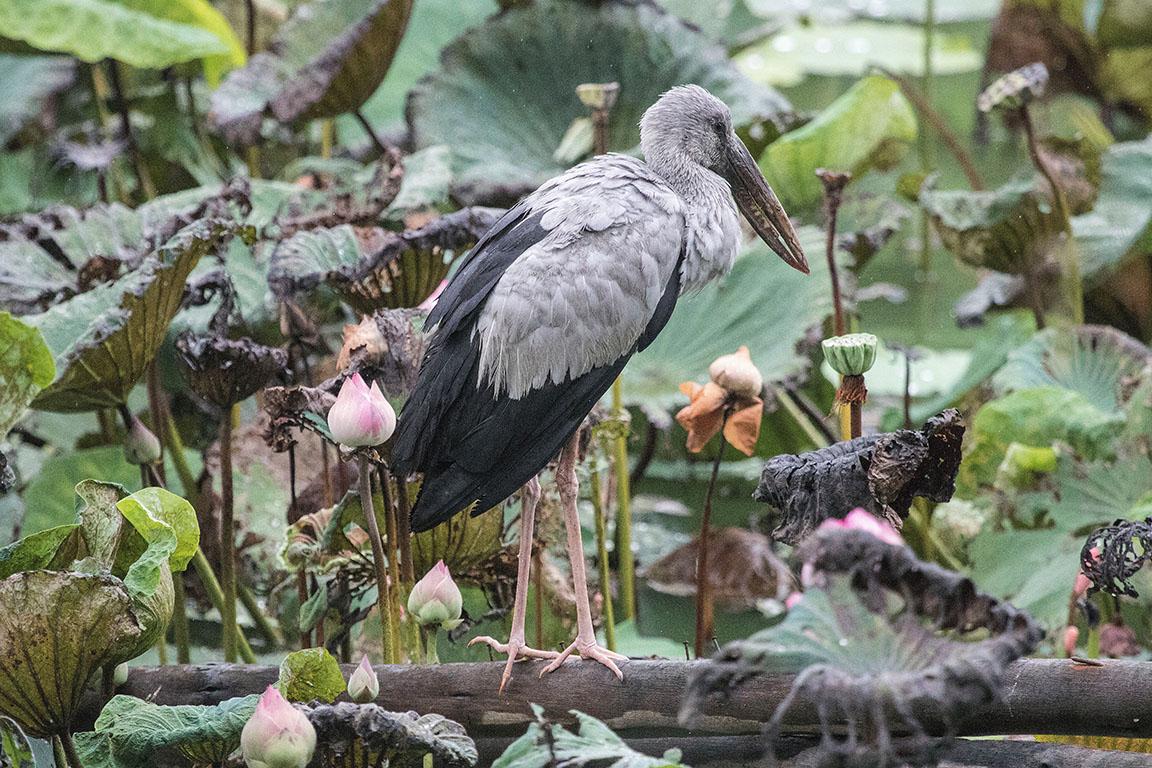Asian Openbill

Ayutthaya, Thailand
The Asian openbill is a common resident throughout SE Asa and the Indian Subcontinent.
Habitat
They inhabit freshwater wetlands, marshes, crop fields and irrigation canals. They migrate frequently, responding to water levels.
Feeding
Asian openbills feed mainly on large molluscs, butwill also take amphibians, reptiles, fish, insects, worms and crustaceans. They use the tips of their bills to open snail shells. The rough edge of their beaks is believed to enable them to handle hard shells and their slippery contents. They forage with their mandibles slightly apart and make swift vertical jabs in shallow water with head and neck partially submerged. They are usually solitary feeders but occasionally form flocks when there are ample food supplies.
Breeding
Asian openbills are gregarious and nest in colonies, often with other birds such as egrets and cormorants, choosing the tops of trees that are often partly submerged to build stick platforms lined with leaves and grass. Males bring nesting materials while femals defend the nesting site. Males and females construct the nests with the females in charge. Both parents incubate two to four eggs and rear the chicks, with one parent continously on guard to protect the nest.
Wlidfile Specials.
- Asian openbills are sometimes polygynous and two males or two females may share breeding responsibilites. Such arrangements bring considerable advantages in terms of breeding success as nests are well protected and chicks well fed..
- Both Asian openbill eggs and chicks are preyed upon by crows, eagles, and monitor lizards.
- Asian openbills fly by soaring on thermals then glide to their destinations.
- Asian openbills are welcomed by farmers because they feed on pests such as grasshoppers and snails that damage rice crops.
- The openbill is named after the gap between its upper and lower mandibles which provides leverage for cracking open snail shells..
- Experiment show that openbills can extract snails from their shells even when blindfolded.
- In colonial India, sportsmen shot the openbill for meat, calling it the "beef-steak bird".